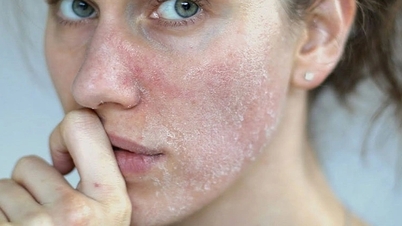Dimples are small indentations that commonly appear on the cheeks, corners of the mouth, chin, elbows, due to genetics, weight gain or changes in facial muscles.
This article synthesizes information from Healthline and Livescience sites.
Why do people have dimples?
- Dimples are often hereditary. The genes that control the formation of these dimples are often passed down from parent to child.
- The gene responsible for creating dimples on the face, especially on the chin, may be due to chromosomes 5 and 16. These chromosomes affect the formation of connective tissue during embryonic development.
How many people have dimples?
The prevalence of dimples can vary depending on the population. A 2016 study by Delta State University (USA) of 2,300 Nigerians found that about 37% of the survey participants had dimples.
How much of it is determined by genetics?
According to a 2015 study by Abant Izzet Baysal University (Türkiye), if one parent has dimples, the child has a 20-50% chance of having dimples. Meanwhile, if both parents have dimples, the chance of passing them on to the child is 50-100%.
Why do I have dimples and my parents don't?
- For some people, dimples may appear in their early years and disappear as they grow older. This is due to fat accumulating in the cheeks during childhood, creating a chubby appearance. The fat gradually decreases over time, causing the facial muscles to stretch and the dimples to disappear.
- In some cases, dimples are not a genetic factor but are caused by facial muscle correction during surgery.

Dimples often appear when the face expresses emotions, especially when smiling. Photo: Freepik
Location of dimples
- On the cheeks: The zygomatic muscle is responsible for controlling facial expressions. When this muscle changes and returns, the corners of the mouth will lift, forming dimples. According to a 2018 study of 216 people by SRM Dental College (India), bilateral dimples are the most common type, accounting for 55.6%. People with dimples on one cheek account for 44.4%.
- Chin: A dimple in the chin is formed when the two halves of the lower jawbone do not fuse properly in the midline. This condition is called a cleft chin or dimpled chin.
- On the back: Dimples are created by a short ligament (fibrous band) that attaches the top of the hip bone to the subcutaneous tissue. In addition to coins, they are also known as Venus's dimples.
- Elbow dimples: Sometimes there is a dimple on either side of the elbow. It can also be a sign of elbow joint swelling due to overuse or injury.
- Butt dimples: This condition is caused by cellulite or fat deposits just below the skin's surface. This "mark" can be inherited or caused by hormones and poor posture.
The ability to disappear
- Many people are born with dimples that last a lifetime. However, in some cases, they may disappear as they grow older.
- A child is born without dimples, but can also develop dimples during childhood.
- Dimples caused by excess fat will disappear with a change in diet and proper exercise.
Huyen My
Source link







![[Photo] Cat Ba - Green island paradise](/_next/image?url=https%3A%2F%2Fvphoto.vietnam.vn%2Fthumb%2F1200x675%2Fvietnam%2Fresource%2FIMAGE%2F2025%2F12%2F04%2F1764821844074_ndo_br_1-dcbthienduongxanh638-jpg.webp&w=3840&q=75)









![[Video] Prevent disease outbreaks after floods](https://vphoto.vietnam.vn/thumb/402x226/vietnam/resource/IMAGE/2025/12/04/1764833541876_720-jpg.webp)














































![[VIMC 40 days of lightning speed] Hai Phong Port determined to break through, reaching the target of 2 million TEUs by 2025](https://vphoto.vietnam.vn/thumb/402x226/vietnam/resource/IMAGE/2025/12/04/1764816441820_chp_4-12-25.jpeg)

















































Comment (0)